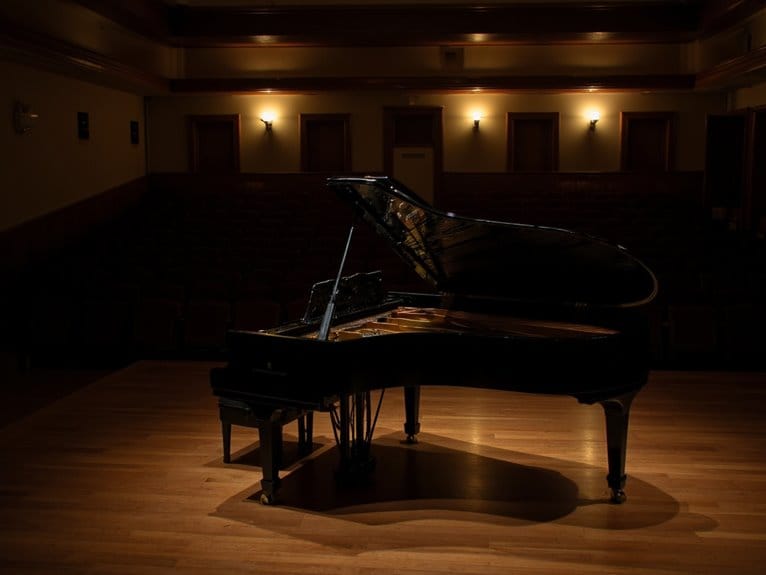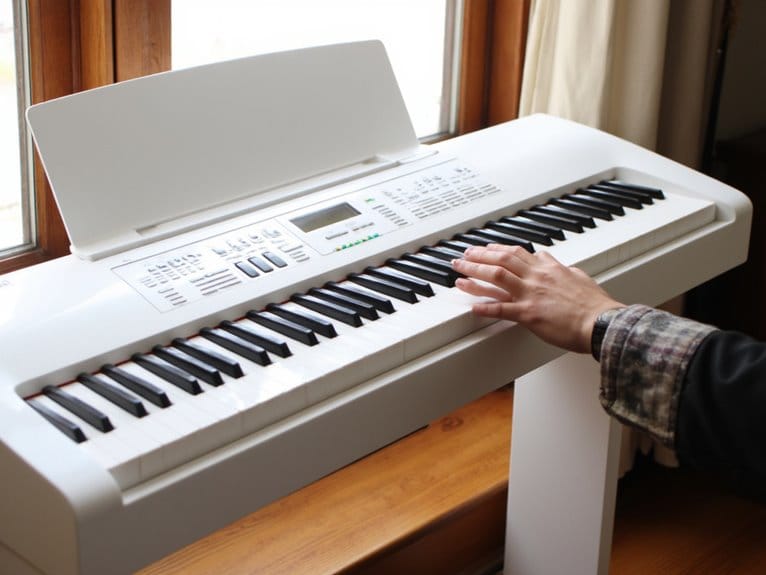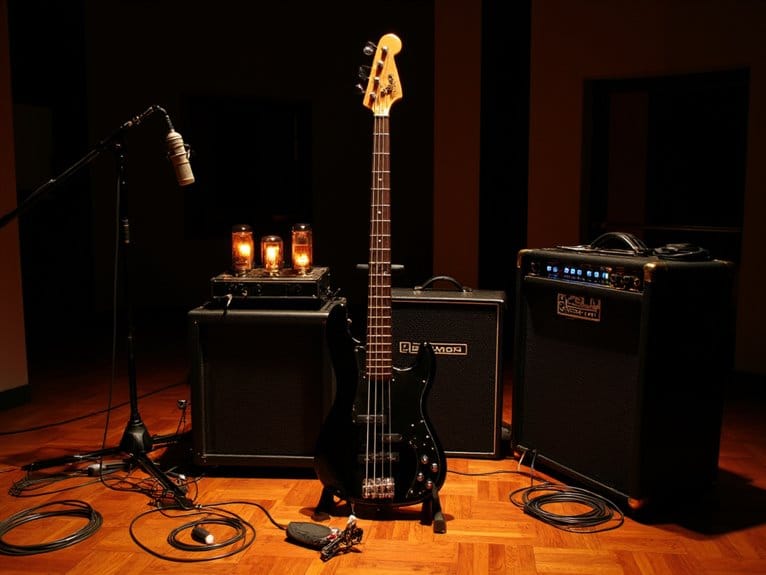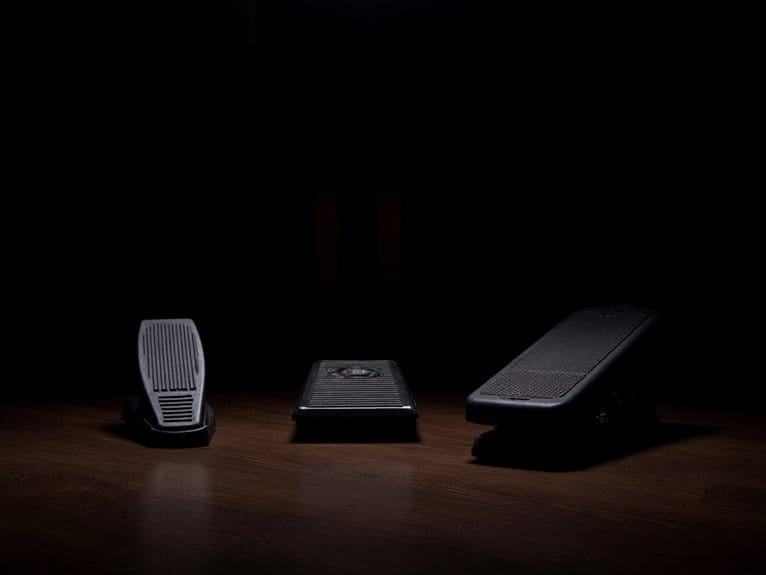Understanding Dynamic Range: Why Louder Isn’t Always Better
Dynamic range measures your audio system’s ability to handle both whisper-quiet details and thunderous peaks, typically spanning 65-96 dB depending on your playback medium. When engineers prioritize loudness over dynamics through hypercompression, you’ll experience listening fatigue and lose the emotional nuance that makes music compelling. While CDs offer superior 96 dB range compared to vinyl’s 65 dB, streaming services often compress these dynamics for consistent volume, sacrificing the natural contrasts that create engaging soundscapes worth exploring further.
We are supported by our audience. When you purchase through links on our site, we may earn an affiliate commission, at no extra cost for you. Learn more.
Notable Insights
- Dynamic range measures the gap between quiet and loud sounds, preserving natural musical contrasts for realistic audio experiences.
- Modern “loudness wars” compress audio dynamics, creating listener fatigue and reducing the emotional impact of music.
- Wider dynamic range allows subtle details and powerful crescendos to coexist, enhancing emotional engagement with audio content.
- Over-compression creates a “wall of sound” effect that flattens music and can cause physical discomfort during listening.
- Professional audio requires balanced dynamic range management, tailored to genre specifications rather than maximizing pure loudness levels.
What Dynamic Range Really Means in Audio Systems
When I first started diving into audio equipment specifications, I’ll admit that dynamic range seemed like just another technical buzzword thrown around by manufacturers to impress buyers, but it’s actually one of the most crucial measurements that determines how realistic and engaging your listening experience will be.
Think of Dynamic Range as your system’s ability to handle whisper-quiet details and thunderous crescendos without losing either in distortion or background noise. It’s measured in decibels, representing the gap between your equipment’s noise floor and the loudest sound it can reproduce cleanly.
This directly impacts Audio Fidelity because systems with wider dynamic range preserve the natural contrast between soft and loud passages, making your music sound more lifelike and emotionally compelling.
The Science Behind Measuring Audio’s Quietest and Loudest Moments
Although dynamic range might seem straightforward as the difference between loud and quiet sounds, accurately measuring these extremes requires sophisticated scientific methods that reveal just how complex audio analysis can be.
When I examine dynamic range measurement techniques, I find that engineers typically use THD+N analysis on low-level test signals, often at -60 dB, to establish the noise floor relative to full output.
This process involves band-limiting filters covering the audible spectrum from 20 Hz to 20 kHz, though FFT analysis with energy ratios provides more precise results when traditional filters fall short.
The calculation itself uses logarithmic ratios-specifically 20 log₁₀-to express amplitude differences in decibels, transforming raw voltage measurements into meaningful dynamic range values that accurately represent your audio system’s true performance capabilities.
How Different Media and Playback Systems Handle Dynamic Range
Since every playback medium and system brings its own unique characteristics to the table, I’ve discovered that understanding how they handle dynamic range reveals why your favorite album might sound dramatically different on vinyl versus streaming, or through high-end headphones compared to your car stereo.
CDs offer an impressive 96 dB range, while vinyl typically maxes out around 65 dB due to surface noise and mechanical constraints.
Streaming services often compress dynamics to maintain consistent loudness between tracks, which improves convenience but sacrifices musical nuance.
Your playback quality depends heavily on component specifications, noise floors, and maximum output levels before distortion kicks in.
These media limitations mean that what you hear isn’t always what the artist originally intended.
The Hidden Costs of Loudness Wars and Audio Compression
These technical limitations pale in comparison to what I consider the most damaging trend in modern audio production: the relentless pursuit of loudness that’s systematically destroyed the emotional impact of countless recordings over the past three decades.
When hypercompression reduces your listener experience to a “wall of sound,” you’re dealing with far more than technical degradation.
The loudness impact creates:
- Listening fatigue that makes you want to turn off music sooner
- Increased hearing damage risk from continuous high-amplitude levels
- Emotional flatness where music loses its natural breathing and expressiveness
- Physical discomfort during extended listening sessions
Metallica’s “Death Magnetic” became the poster child for this problem, generating thousands of petition signatures demanding a less compressed remix after fans compared it to uncompressed video game versions.
Preserving Audio Quality Through Smart Dynamic Range Management
Three fundamental principles separate professional audio engineers from hobbyists when it comes to dynamic range management: understanding your tools, knowing your genre, and measuring your results with precision.
Your choice of compressors, limiters, and gates determines how effectively you’ll preserve audio clarity while making dynamic adjustments. I’ve learned that proper gain staging throughout your signal chain prevents the distortion that destroys natural dynamics, while transient shaping tools help emphasize attack phases without over-compression.
| Genre | Dynamic Range Approach | Target LRA |
|---|---|---|
| Classical | Wide range for nuance | 15-20 dB |
| Pop | Narrow for consistency | 6-10 dB |
| Jazz | Gentle, organic handling | 12-18 dB |
| EDM | Strategic compression | 4-8 dB |
Visual metering plugins provide real-time feedback, helping you balance impact with transparency across different playback environments.
On a final note
You’ve now got the tools to understand why that crushing bass might actually be crushing your music’s soul, and honestly, I’ve made enough mistakes with overly compressed mixes to know the difference matters. When you’re choosing gear or adjusting settings, remember that preserving dynamic range isn’t about being an audio snob-it’s about letting your music breathe naturally, maintaining those delicate contrasts between whispered vocals and thunderous drums that make recordings truly enchanting.







